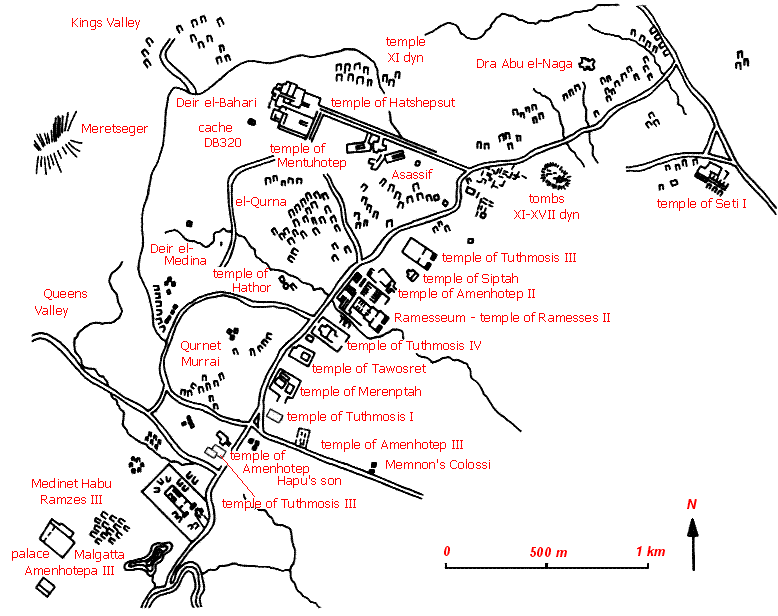![]()
Western Thebes
The
site of Thebes developed relatively late, in the XIth Dynasty. Thousands of rock
tombs are dispersed along the base of the hills. The religious significance of
Thebes was enhanced by the presence of more than 50 kings tombs of the XI - XX
Dynasties. Lying along the edge of the cultivation are the associated cult
complexes, houses of millions of years. In addition, there are further private
mortuary temples and other cult areas on the West Bank. Amenhotep III's palace
town at Malgatta lies at the southern end of the West Bank complexes.
Picturesque Western Thebes consist of
necropolises with countless graves of royal officials
assembled together in sites known today as
Sheikh Abd el-Gurna, Medinet Habu,
Qurnet Murrai,
Deir el-Medina,
Deir el-Bahari,
el-Asasif and
el-Khokha. Tombs cut in a bed-rock became in
turn a burial site for the rulers of the New Kingdom. They are known as
Valley of the Kings, Valley of the Apes,
Valley of the Queens, Dra
Abu el-Naga.

|
There
is over 600 tombs at the West Theban necropolis including royal tombs.
many of them, known and admired yet in antiquity, did not survive until
now. Below I present a list of tombs that underwent complete damage. A
list of the remaining, preserved ones has been placed at pages dedicated
to individual necropolises. |
|
![]()
|
Copyright © 2000-2013 Dariusz Sitek, Czestochowa - Chicago - Ann Arbor |